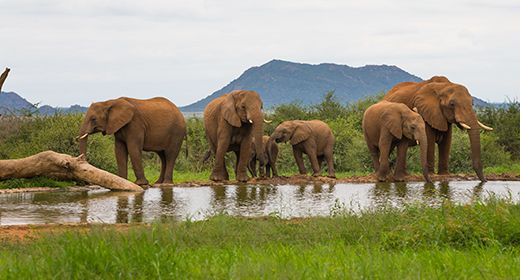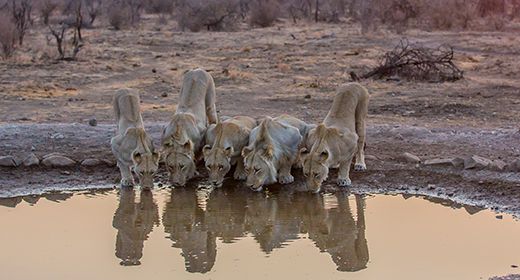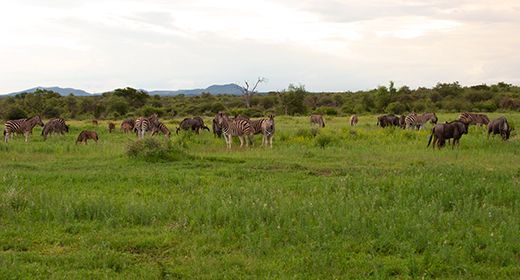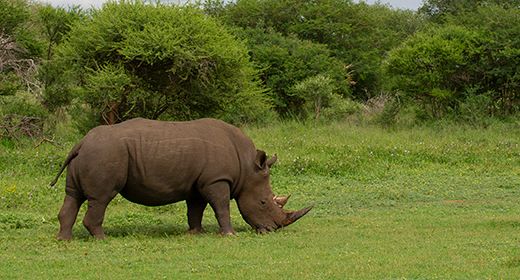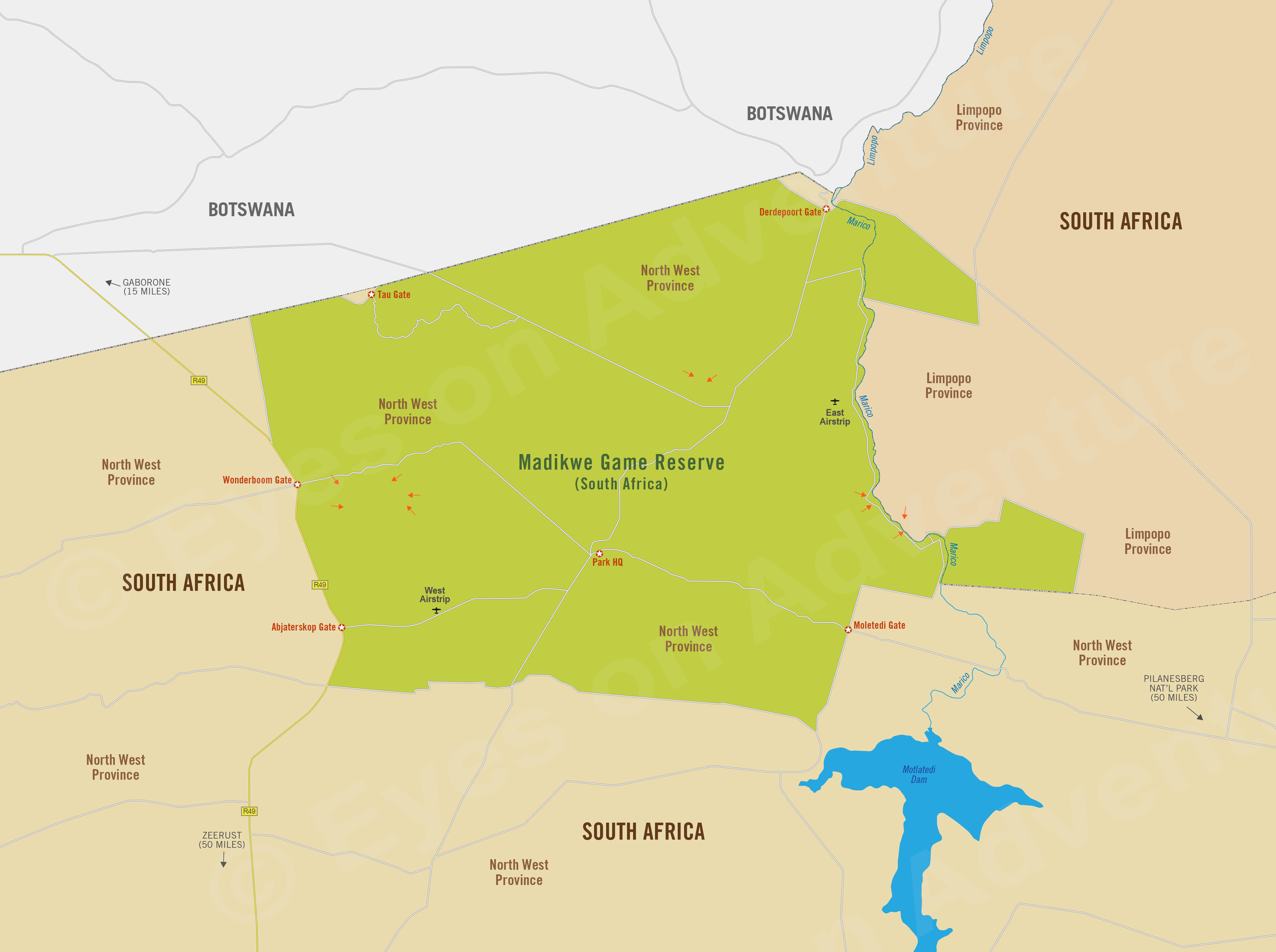Madikwe
(incl. Madikwe Game Reserve)
Region Links: Cape Peninsula, Cape Town, Cape West Coast, Cape Winelands, Eastern Cape, Garden Route, Gauteng Province, Johannesburg, Kruger Park & Lowveld, Kruger Private Reserves, KwaZulu-Natal, Madikwe, Overberg & Whale Coast, Pilanesberg & Sun City, Sabi Sand Reserve
Highlights
- Explore one of South Africa's most successful conservation successes
- View a wide diversity of species, including all of Africa's Big Five
- Visit one of the best places in Southern Africa to see the African wild dog
- Experience expert guiding at a luxurious lodge in a malaria-free wildlife reserve
EOA Recommends: Jaci's Safari Lodge, Madikwe Hills Game Lodge, Makanyane Safari Lodge, Mateya Safari Lodge, Tuningi Safari Lodge
The Madikwe Game Reserve is one of South Africa's farmland-turned-wildlife-reserve success stories. The reserve offers upscale accommodation and a superb wildlife experience, including Africa's Big Five, in a malaria-free environment.
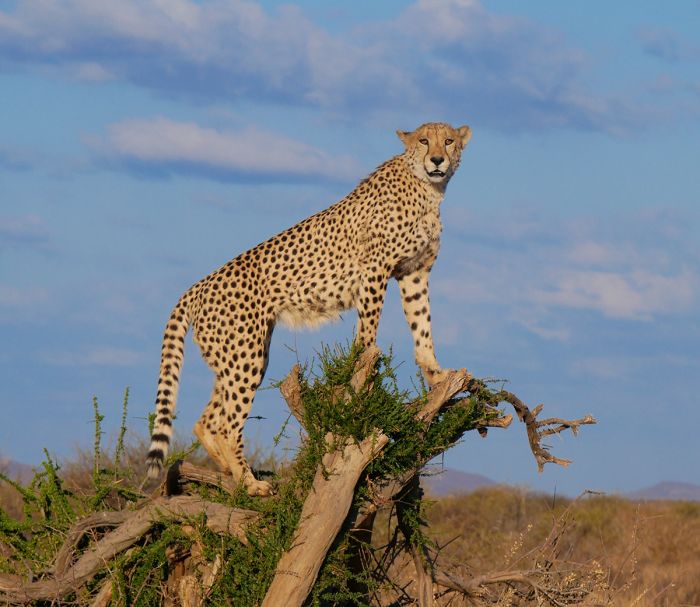
Cheetah on the lookout in Madikwe
Madikwe covers 760 sq kms (293 sq miles) of woodland, plains and rocky hills along the Botswana border and flanked on the east by the perennial Marico river.
The reserve can only be explored by guests at one of the 30+ safari camps and lodges in the reserve. The all-inclusive packages at any of the Madikwe lodges offer high-end accommodations and expertly-guided game drives in open 4WD vehicles that are comparable to the private reserves bordering Kruger National Park.
Madikwe's wildlife is diverse and guests have a good chance of seeing the Big Five (lion, leopard, elephant, rhino, buffalo), as well as all the iconic species including giraffe, zebra, kudu, cheetah, hartebeest, and more. The reserve is also one of the best places in all of southern Africa to see the endangered African wild dog.
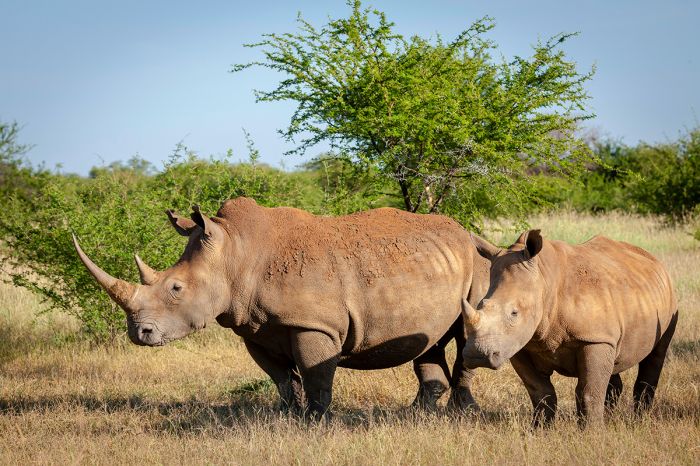
White rhinos in Madikwe Game Reserve
History
The land that comprises current day Madikwe Game Reserve was home to various tribes for thousands of years and eventually inhabited by the white South African Boers, who used it for cattle farming during the 1800s and 1900s. Most of these farms fell into disuse and were abandoned when, in 1991, the government decided that the land would be best used as a wildlife reserve.
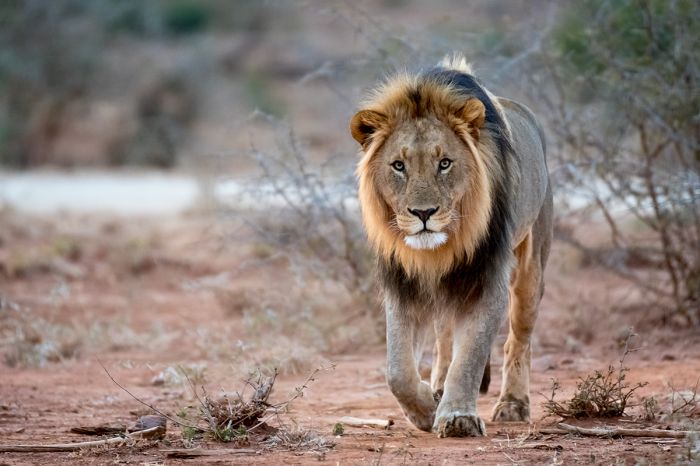
A big male lion in the Madikwe Game Reserve
Operation Phoenix was created as a joint venture between the North West Parks Board, private enterprise, and local communities to create the reserve. The primary purpose of the reserve was to create sustainable tourism and provide jobs for the local people living in this remote area.
Fences were erected to enclose the land and over 10 000 once-indigenous animals comprising 28 large mammal species were relocated into the new reserve. The operation took over seven years to complete, with wildlife flown or driven in from other reserves in southern Africa, including an entire elephant herd from Gonarezhou National Park in Zimbabwe.
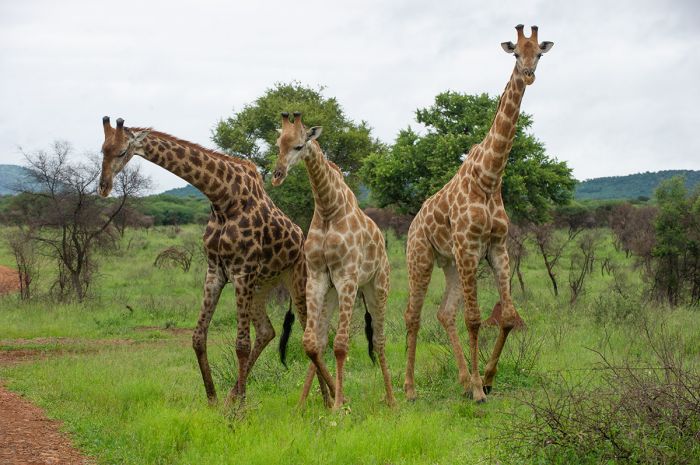
Giraffes in the Madikwe Game Reserve (Copyright © James Weis)
Experience
Madikwe is one of South Africa's best and most exclusive safari destinations, with up-scale lodges, plentiful wildlife and exceptionally good game viewing.
Unlike Kruger National Park and Pilanesberg Game Reserve, Madikwe is not open to the general public and independent self-drive safaris are not permitted. Only guests staying at (or booking a day-package from) one of the safari lodges inside the reserve can go on safari here, so vehicle traffic is generally low.
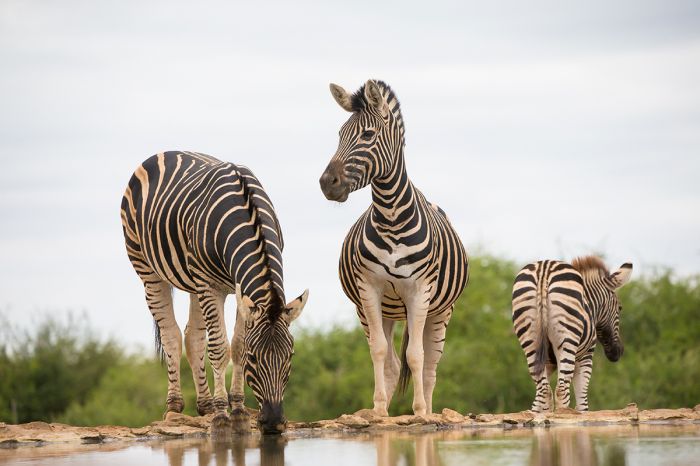
Zebras drinking at a waterhole in Madikwe
The safari camps and lodges in Madikwe are mostly high-end and not for the budget-minded. They all offer full-board accommodation with chef-prepared meals, twice-daily game drives in open 4x4 vehicles, expert guiding, and a well-managed, reserve-wide system for minimizing vehicles at wildlife sightings.
Some of the lodges also offer private homes which accommodate groups or large families in a fully catered and private safari experience. Overall, the guest experience in Madikwe is similar in most respects to that of the exclusive private reserves bordering the Kruger National Park.
Wildlife in the reserve is abundant and diverse, with all the major predators, including lion, leopard, cheetah, spotted hyena, and jackal. Madikwe is well known for being one of the best places on the continent to see the endangered African wild dog. Crocodile are present in the river and some of the waterholes.
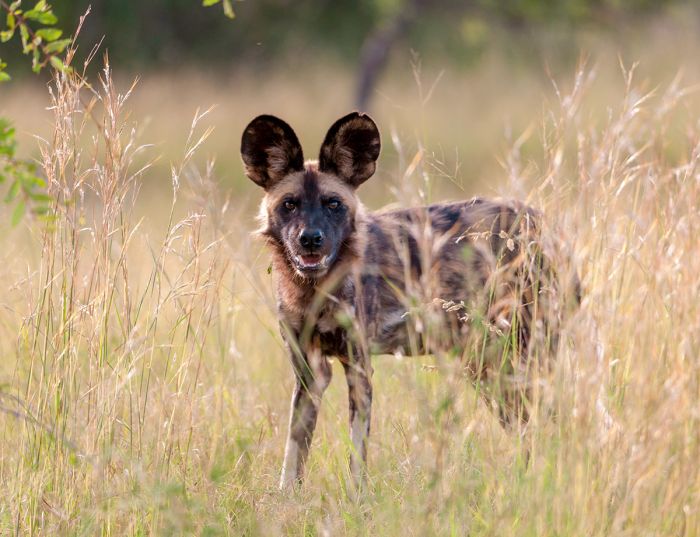
African wild dog in Madikwe
Herbivores are also well represented with zebra, giraffe, wildebeest, both black and white rhino, elephant, buffalo, greater kudu, sable antelope, red hartebeest, waterbuck, warthog, hippo and more. Birding is excellent, with a species list topping 350.
Madikwe is malaria-free and within driving distance of Johannesburg and Pretoria, so it is one of the most popular reserves in the country for locals and international visitors alike.
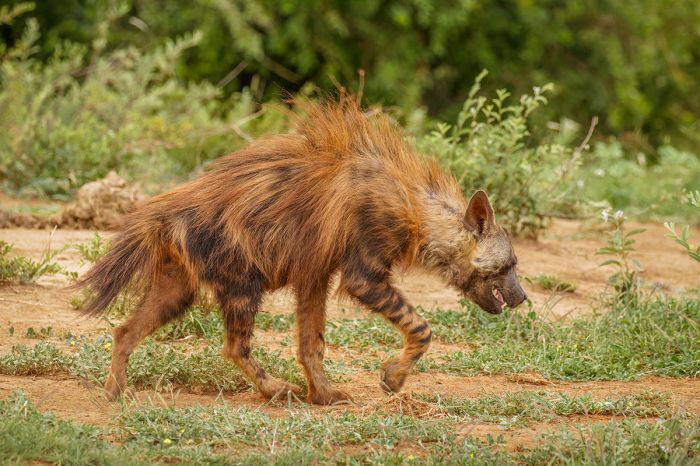
A brown hyena in Madikwe
Great Good Fair Poor
- Jan
- Feb
- Mar
- Apr
- May
- Jun
- Jul
- Aug
- Sep
- Oct
- Nov
- Dec
Madikwe is a year-round destination, with good game viewing all year. Winters are dry and cool and the summer brings warm temps and the rains.
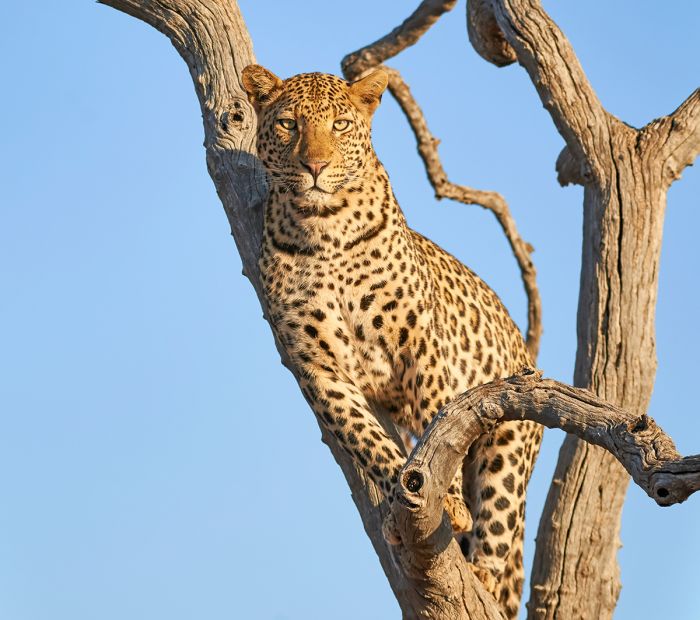
A leopard looks out from a dead tree in Madikwe
The dry season in Madikwe is occurs during the winter and little to no rain falls between May and September.
May is the end of fall and temps are about 45°F (7°C) in the morning and reach 75°F (24°C) during the afternnon.
June thru August are the proper winter months and guests will need warm clothing in layers for the morning game drives, as temps are chilly and the vehicles are open. Temps fall to 40°F (4°C) or lower in the early morning. Daytime temps are comfortable at around 74°F (23°C).
September is early spring and a lovely time of year to visit. Morning temps are about 52°F (11°C), while afternoon temps average 84°F (29°C).
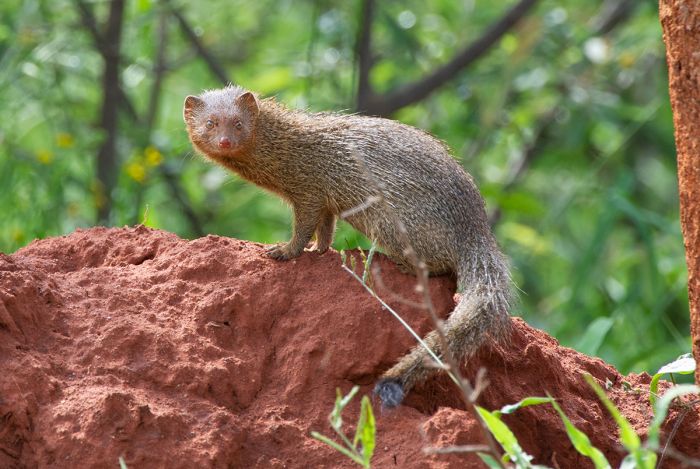
A slender mongoose in Madikwe (Copyright © James Weis)
The summer rains fall between October and April, with most of the rain falling between November and March. Summer temps can become quite hot, but the rains generally do not fall all day, but rather as afternoon storms that can be heavy but not lengthy.
October and November are lovely, with the early rains transforming the landscape and spring flowers blooming on the plains. Trees are starting to flower and the migratory birds are arriving to nest. Temps average 63°F (17°C) in the morning and 88°F (31°C) in the afternoon.
December thru February are the proper summer months and also have the highest rainfall. Afternoon storms are expected almost daily and afternoon temps average 88°F (31°C).
March and April bring cooling temps and the daily rains are abating. Days are typically sunny and mild, with temps averaging 81°F (21°C). Nighttime temps are comfortable at 54°F (12°C).
Game viewing at Madikwe is good all year, but the winter months (May thru September) tend to be slightly better, as wildlife gathers at the permanent water sources to drink. Spring and summer are fantastic for photography, with verdant landscapes, flowing trees, newborn herbivores, and abundant bird life.
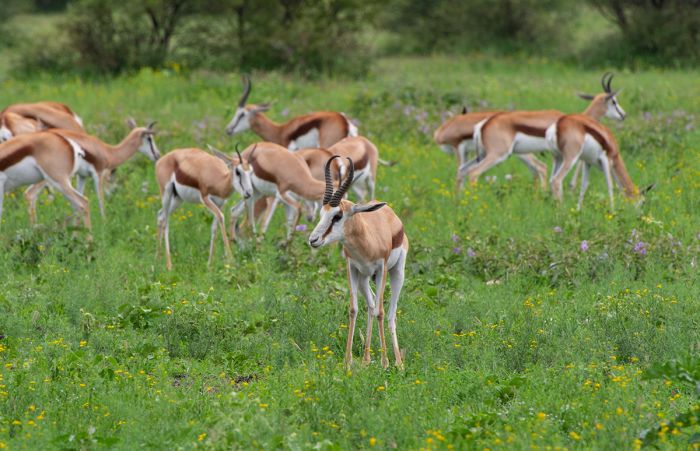
Springboks in Madikwe Game Reserve (Copyright © James Weis)




